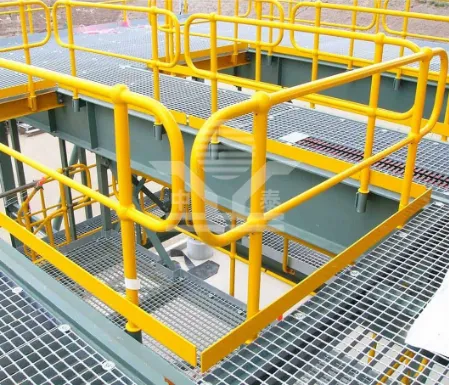Stainless Steel Grating Specification A Comprehensive Overview
Stainless steel grating is a popular choice for industrial and commercial applications due to its strength, durability, and resistance to corrosion. Grating is used in various settings, from walkways and stair treads to platforms and drainage covers. Understanding the specifications of stainless steel grating is critical in ensuring that it meets the requirements of a particular application.
Material Composition
Stainless steel grating is typically fabricated from stainless steel alloys, primarily 304 or 316 grade. The composition of these alloys plays a significant role in the grating's performance. Grade 304 stainless steel offers excellent corrosion resistance and is suitable for most indoor and outdoor applications. However, for environments that are exposed to harsher conditions, such as marine or chemical applications, 316 stainless steel is the preferred choice due to its superior resistance to pitting and chloride corrosion.
Load Capacity
One of the primary specifications to consider when selecting stainless steel grating is its load capacity. Load capacity refers to the maximum weight that the grating can support without failure. This specification varies based on the design of the grating, including the spacing between the bars and the thickness of the material. Grating is categorized into different load classes, and selecting the right class is crucial for ensuring safety and durability.
Bar Spacing and Thickness
The spacing and thickness of the bars in stainless steel grating determine its overall strength and structural integrity. Common bar spacing options range from 30mm to 40mm, with a standard thickness of 3mm to 6mm for the bars. Bar thickness is essential for load-bearing applications, where thicker bars provide greater strength and are advisable for heavy-duty uses. The spacing must also comply with specific regulations to ensure safety and accessibility.
stainless steel grating specification

Surface Finish
The surface finish of stainless steel grating is another important specification. A smooth finish can be beneficial for certain applications, while a serrated finish is often preferred in environments where slip resistance is crucial. Slip-resistant surfaces enhance safety, particularly in wet or greasy conditions, making it an essential consideration for facilities such as restaurants and industrial sites.
Fabrication Options
Stainless steel grating can be manufactured in various designs, with the most common types being welded, swage-locked, and press-locked. Welded grating is known for its strength and reliability, while swage-locked grating offers a lighter alternative with good load-bearing capabilities. Press-locked grating is easily customizable for specific applications, making it a flexible option for various projects.
Standards and Compliance
In addition to the physical properties of stainless steel grating, it is essential to consider industry standards and compliance. The American National Standards Institute (ANSI) and the American Society for Testing and Materials (ASTM) set forth guidelines that manufacturers must adhere to. Ensuring that the grating meets these standards is critical for safety and performance, particularly in regulated environments.
Conclusion
When selecting stainless steel grating, understanding the specifications is vital to ensuring that it meets the specific needs of your application. Factors such as material composition, load capacity, bar spacing and thickness, surface finish, fabrication options, and compliance with industry standards all play a role in the effectiveness and durability of the grating. By taking the time to consider these specifications, you can make informed decisions that enhance safety, performance, and longevity in your projects. Whether for industrial, commercial, or architectural purposes, stainless steel grating remains an excellent choice for a variety of applications.
-
Versatility of Expanded Aluminum Metal for Various Applications
NewsMay.19,2025
-
The Geometry of Steel Gratings: Why It Matters
NewsMay.19,2025
-
Reinforcement Applications of Perforated Mesh in Masonry
NewsMay.19,2025
-
Essential Tools for Installing a Deck Mesh Railing
NewsMay.19,2025
-
Anti-Slip Flooring Made with Stainless Expanded Mesh
NewsMay.19,2025
-
Adjustable Steel Grating for Uneven Terrain
NewsMay.19,2025
Subscribe now!
Stay up to date with the latest on Fry Steeland industry news.

